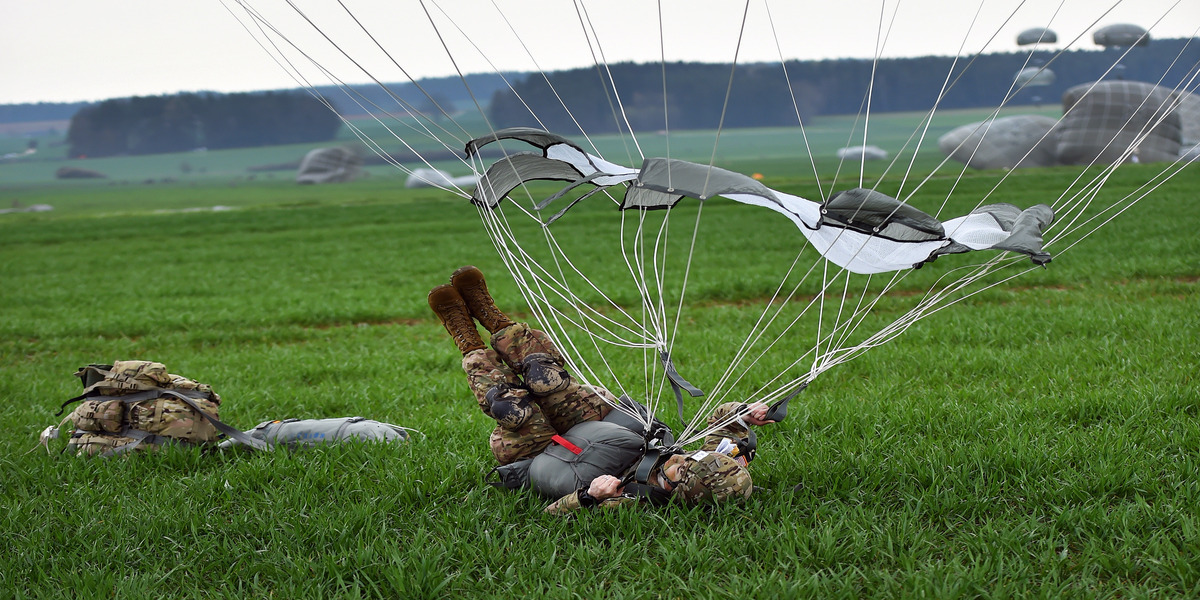Airborne operations have been a tactically advantageous method of entering a battlefield for decades. However, falling and more importantly, landing require a very technical and precise skill set to execute correctly without providing harm to the soldier’s body. The rapid deceleration that results when a paratrooper lands places a lot of force in a short amount of time on their joints. The rate of injury in airborne jumps is about 5 out of every 1000. An understanding of what is going on when a paratrooper lands— both correctly and incorrectly— can be beneficial to helping reduce injury to the soldier, and preserve the longevity of the soldier’s body.
The Parachute Landing Fall (PLF) is considered the proper way to land after a static line jump. This includes landing with five points of contact to distribute the impact over time and area, and reduce the effect that is placed on the body. When a soldier impacts the ground, all of their descent velocity immediately reduces to zero. This imparts a large force over a very short period of time which means it is a very high impact. These five points of contact (in order) are balls of the feet, side of the calves, hamstrings, buttocks, and the back.
This study examined the knee during the PLF, to see what was going on when injuries were occurring. It found there were five repeated variations of the PLF that resulted in excessive knee and ankle bending and therefore caused injuries. All five of these variants resulted in shorter landing times than the correct form of PLF. Additionally, three of the variants resulted in smaller or larger maximum angles of bending than the proper PLF. The other two variants involved the knees not being squeezed together throughout the landing, so the knees went outward or inward creating an unequal force distribution on the lower legs. Additionally, injury was more frequent in those whose quadriceps did not go through a silent period, or went through a shorter period of inactivity. That is, during the landing, it helps the body to absorb the impact by having the quads not contract for a period of time.

The effect of the landing on the spine was observed in this study. It showed the most prevalent injury due to the landing for paratroopers was lumbar disc degeneration, which is when the lumbar disks that act as shock absorbers for the spine, begin to wear down. This injury is attributed mainly to hard landings on the buttocks, instead of rolling towards a side.

The last important consideration to the risk of injuries to paratroopers are the risk factors associated with it being a military event, rather than a jump for sport. This article takes a look at the increased risk for injury that soldiers have due to the nature of their jump. It highlights a couple of factors in particular that increase the risk of injury: the time of day and the amount of equipment. The time of day affects a soldier’s ability to see what kind of surface they are landing on which increases the risk of injury. Jumping at night increased the risk of injury by 1.76 in comparison to jumping during the day. The amount of equipment affects the rate of descent and the force with which the soldier hits the ground. Jumping with equipment increased the risk of injury by 2.6 as compared to the risk without equipment.
To reduce injury risk, soldiers need to maximize both the duration and area over which impact forces are absorbed. Proper landing techniques are essential, along with attention to external factors like jump timing and equipment load.

